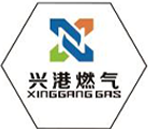
8 月 . 16, 2024 20:52
Back to list
Design and Implementation of Natural Gas Pressure Regulation Stations for Efficient Distribution
Natural Gas Pressure Reducing Stations Ensuring Safe and Efficient Distribution
Natural gas is a crucial energy source that powers homes, industries, and power plants around the globe. However, transporting this gas from production sites to end-users requires a meticulous system that includes various infrastructure components. One of the most significant elements of this system is the natural gas pressure reducing station (PRDS), which plays a vital role in ensuring the safe and efficient distribution of natural gas.
What is a Pressure Reducing Station?
A natural gas pressure reducing station is a facility that reduces the pressure of high-pressure natural gas from transmission pipelines to a lower pressure suitable for distribution networks. As natural gas is transported through pipelines over long distances, it is compressed to high pressures to minimize friction losses and ensure efficient flow. However, the pressures required for transportation are often too high for safe and effective use within residential and industrial settings. This is where PRDS comes into play.
How Does It Work?
The PRDS operates through a series of components designed to safely manage gas pressure. Initially, gas enters the station at a high pressure. The primary component of the station is the pressure regulating valve, which is designed to reduce the pressure of the gas. This valve automatically adjusts according to the downstream conditions, ensuring consistent and safe pressure levels.
In addition to the regulating valves, the station typically includes filtration systems, back-pressure regulators, and sometimes odorization units where an odorant is added to the gas to enhance safety measures. These components work together to filter out impurities from the gas, maintain consistent pressure, and provide the necessary safety features.
Importance of Pressure Reducing Stations
natural gas pressure reducing station

The importance of PRDS cannot be overstated. Firstly, it enhances the safety of the natural gas distribution system. By regulating and lowering pressure, these stations prevent the risk of gas leaks and explosions that could occur if high-pressure gas were allowed to enter a residential or commercial building.
Secondly, pressure reducing stations optimize the performance of the distribution network. By ensuring that gas is delivered at appropriate pressure levels, these stations help maintain the efficiency of appliances and equipment that utilize natural gas. This ensures that consumers receive a reliable supply of energy for heating, cooking, and industrial processes.
Moreover, PRDS contributes to the overall infrastructure's stability. During peak demand times, these stations play a crucial role in managing and distributing the gas load efficiently. In this way, pressure reducing stations help prevent overloading in the system, which could lead to potential failures or service interruptions.
Environmental Considerations
As the world becomes increasingly aware of environmental issues, natural gas pressure reducing stations are also adapting. Many modern facilities are incorporating advanced technologies and practices, such as using automated systems that enhance operational efficiency and reduce methane emissions—one of the most potent greenhouse gases associated with natural gas production and distribution.
Conclusion
In summary, natural gas pressure reducing stations are essential components of the natural gas distribution network. By converting high-pressure gas from transmission pipelines to a lower, usable pressure, they ensure the safe and efficient delivery of this critical energy source to consumers. As demand for natural gas continues to grow, and as environmental concerns become more prominent, the role of PRDS will only increase in importance, making them vital to both the economy and the sustainability of our energy systems.
Latest news
-
Unlocking The Quality Gas Pressure ReducersNewsNov.01,2024
-
The Role of Gas Pressure Reducing StationsNewsNov.01,2024
-
The Importance and Functionality of Safety Relief ValvesNewsNov.01,2024
-
The Essential Role of Safety Valves in Natural Gas ApplicationsNewsNov.01,2024
-
The Essential Role of Gas Pressure RegulatorsNewsNov.01,2024
-
Enhance Your Premium Gas FiltersNewsNov.01,2024

